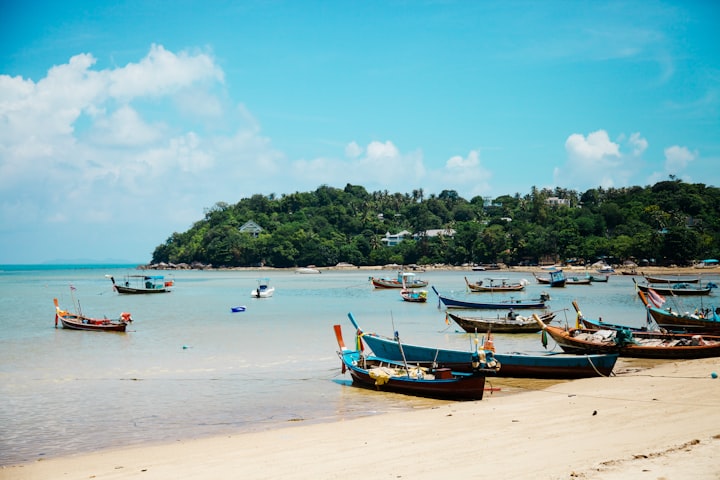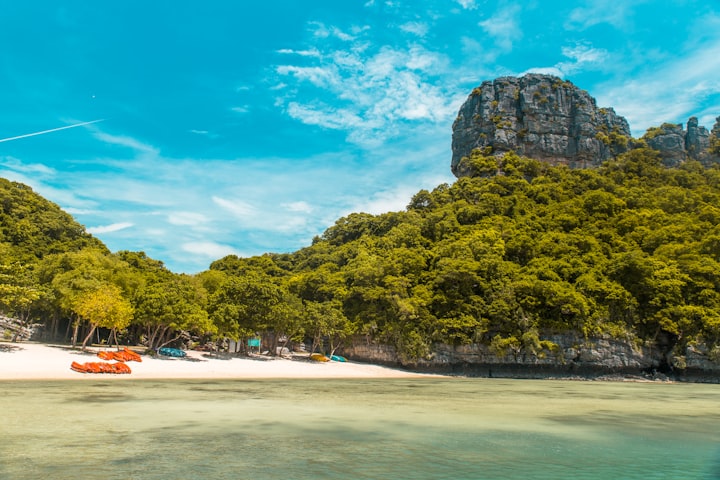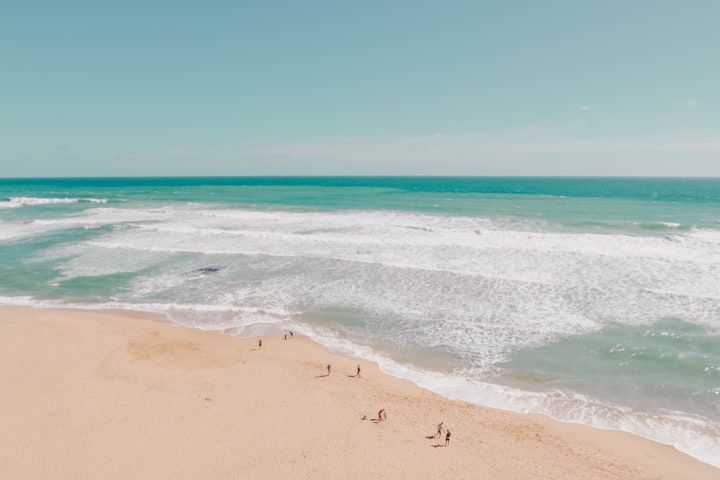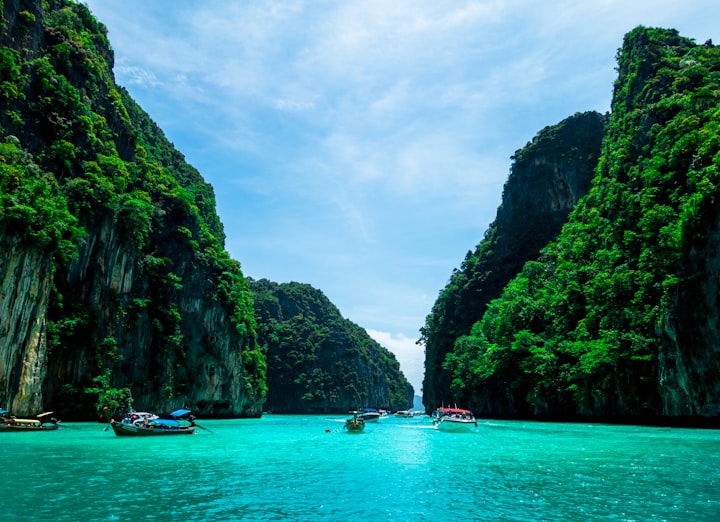
Located in the Gulf of Thailand, Koh Samui is the third largest island in Thailand and the largest of a group of more than eighty tropical islands, and has not been exploited by man for long and still retains a pristine flavor. Koh Samui has many beaches with clear, white sands and stunning scenery, and Chaweng Beach, a crescent-shaped beach that stretches for six kilometers, has the most hotels and recreational facilities on the island.
The island has long been known as the "Coconut Island" because of its coconut production, which is the most important source of income for the local people, who have long been engaged in service and fishing. The locals have bred and trained monkeys to be expert coconut pickers, hence the nickname "Monkey Island".
Best time to travel
Mid-November to April:
It is the rainy season on Koh Samui, with cooler weather in November to January, but also the heaviest rainfall of the year, and the weather is unpredictable, sometimes the beach is very windy and rough, so please choose beach entertainment carefully; March to April temperatures rise and come in April, you can catch the biggest festival in Thailand - Songkran (Water Festival). This is the Thai New Year, and it is a festival worth experiencing.
May to October:
This is the off-season, with showers for most of the period between July and September, which are short-lived, and a slight improvement in October when the weather is still rainy. Visiting Koh Samui during this period requires special attention to tropical marine storm news. If you are arranging water sports such as diving or sailing, please make adjustments according to the local weather forecast.

Attractions
The beauty of Koh Samui is known for its snow-white sandy beaches and lush vegetation, with a small mountain range connecting the island to the east and west, a dense jungle inside and a coastline that stretches out like palm fronds in all directions. Coconut trees can be found everywhere you walk and the scent of coconuts fills the air. And there's nothing better than lazing on the beach, listening to the rustle of the coconut trees, and letting the sunshine all over your body.
Chaweng Beach
Chaweng Beach on the east coast of Koh Samui is a 7-kilometer-long beach, the longest, busiest, and most prestigious on the island. It is the longest, liveliest, and most famous beach on Samui, with exciting water sports and a variety of bars and clubs to enjoy the nightlife at night.
Lamai Beach
This is the second-largest beach on Koh Samui and the water here is transparent and pure, close to coconut palms and banana plantations. Compared to Chaweng Beach, the surroundings are quieter and have a more pristine taste. There aren't too many high-class hotels near Lamai Beach, but there are a number of budget hostels. There are also many resort hotels that offer honeymoon suites, making this the best beach for honeymoons.
In the southern part of Lamai Beach, there are two exotic rocks, Hin Ta & Hin Yai, which means "Grandfather Stone and Grandmother Stone" and are one of the must-see sights for photographers visiting Koh Samui. These two strange rocks are named after their shape, which resembles the sexual organs of a man and a woman. The Grandfather Stone stands straight up on the rock, while the Grandmother Stone is over a hundred meters away, hidden in the raging sea and only clearly visible at low tide.
Bophut Beach
Located on the North Shore, Bophut Beach is an ideal haven for visitors looking to get away from the hustle and bustle of the city. Although coarse sandy and not as attractive as the eastern beaches, it offers a relaxed environment and superb views of Paw Paw Island. Bophut Beach is famous for its proximity to a small local fishing village that was once the oldest settlement on the island. This is the best place to watch the sunset, and find a beachfront restaurant where you can enjoy a delicious meal while watching the sunset.

Ang Thong National Marine Park
Located 20 kilometers west of Koh Samui, Ang Thong National Marine Park consists of 42 small islands filled with huge limestone rocks. The rocks are immersed in crystal clear, flawless water, creating a picture of natural beauty and a paradise that many visitors dream of. You can check out the hidden lagoon of Kemak or experience floating around the limestone rocks.
The Ang Thong National Marine Park was declared the second national marine archipelago park on November 12, 1980, and is a must-visit destination. The best time to visit the national park is usually from March to October. The park may be closed from November to January due to inclement weather.
Big Buddha Temple
Wat Pra Yai, also known as Big Buddha Temple, is Samui's most famous temple and the island's landmark. The temple houses a large statue of Buddha, a magnificent 12-meter-high gold-cast statue that is visible from the air and land for several kilometers. Shoes are not allowed in the temple and women are not allowed to get too close to the monks, to find spiritual silence while respecting the local culture.
Wat Khunaram
In Wat Khunaram, the relics of a monk are enshrined, causing people to marvel at the mystery of Buddhism. The monk, Luong Pordaeng, who passed away in 1973, died in a sitting meditation posture and has remained in that position ever since. The temple now stores the relics in a glass case for devotees to worship. Inexplicably, the body has never shown signs of corruption in its 30 years of existence.
Koh Nang Yuan
Situated in the Gulf of Thailand near Koh Samui, Koh Nang Yuan is one of the landmarks of Koh Samui. The island is made up of three small islands, the most distinctive feature of which is its distinctive "Y" shaped beach that connects the three islands. Unlike the bustling beaches of Koh Tao, this beach is quiet and secluded, perfect for honeymooners.
Koh Nang Yuan is a private island for Thais and the entry conditions are so harsh that there is a 100 baht fee per person to get on the island if you don't plan to stay and no one is allowed to bring plastic or canned goods on the island to stop pollution. What's even harsher is that they have the right to deny you access to the island if conditions on the island don't allow it, even if you've already come to the door. But it is such a small island that everyone who comes to it falls in love with it and willingly throws themselves into this rustic and simple paradise.
At dusk, enjoy a romantic dinner while watching the gorgeous sunset at the end of the vast sea. Then take a barefoot stroll along the long, soft sandy beach, with the sea to your left and right, and the sound of the low, deep, starry sky.
The excellent diving conditions around Koh Nang Yuan provide excellent conditions for beginners to learn to dive, and each course is therefore a very interesting experience. The Japanese Garden on the north side of the island is famous for its beautiful coral and small fish snorkeling. In addition, you can climb to the highest peak of Nansen Island and enjoy a breathtaking view of the island.

Entertainment
Diving
There are diving schools and shops on Chaweng Beach, Lamai Beach, and the surrounding islands of Koh Tao, and you can choose a diving day trip program for about 1000-2000 baht, or a four-day training course from a driving school to get your driving license.
Koh Tao is the largest dive training center in Southeast Asia due to its relatively low dive training prices, has many international dive organizations, and is known as a paradise for diving enthusiasts, with 60% of all diving certificates in Thailand issued from here.
Elephant trekking
There are four elephant camps on Koh Samui, all of which are located in the forest and are not very large. Elephant rides are charged at 600 baht for 30 minutes, which is cheaper than in Phuket and can be negotiated with the elephant owners.
All the elephants here are imported from the northern part of Thailand by local businessmen for the development of tourism. The Thai government has set up elephant half-way houses to take in abandoned elephants and take care of them before sending them to zoos and other institutions.






Comments
There are no comments for this story
Be the first to respond and start the conversation.